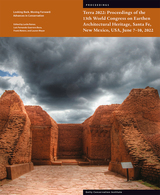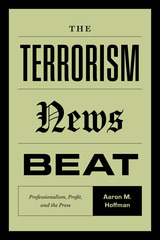4 books about Siegel, Peter E.
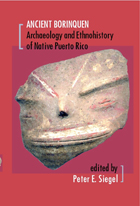
Ancient Borinquen
Archaeology and Ethnohistory of Native Puerto Rico
Edited by Peter E. Siegel
University of Alabama Press, 2008
A comprehensive overview of recent thinking, new data, syntheses, and insights into current Puerto Rican archaeology
Ancient Borinquen is a re-examination of the archaeology of Puerto Rico, drawing data from beyond the boundaries of the island itself because in prehistoric times the waters between islands would not have been viewed as a boundary in the contemporary sense of the term. The last few decades have witnessed a growth of intense archaeological research on the island, from material culture in the form of lithics, ceramics, and rock art; to nutritional, architecture, and environmental studies; to rituals and social patterns; to the aftermath of Conquest.
It is unlikely that prehistoric occupants recognized the same boundaries and responded to the same political forces that operated in the formation of current nations, states, or cities. Yet, archaeologists traditionally have produced such volumes and they generally represent anchors for ongoing research in a specific region, in this case the island of Puerto Rico, its immediate neighbors, and the wider Caribbean basin.
Ancient Borinquen provides a comprehensive overview of recent thinking, new data, syntheses, and insights into current Puerto Rican archaeology, and it reflects and illuminates similar concerns elsewhere in the West Indies, lowland South America, and Central America.
Ancient Borinquen is a re-examination of the archaeology of Puerto Rico, drawing data from beyond the boundaries of the island itself because in prehistoric times the waters between islands would not have been viewed as a boundary in the contemporary sense of the term. The last few decades have witnessed a growth of intense archaeological research on the island, from material culture in the form of lithics, ceramics, and rock art; to nutritional, architecture, and environmental studies; to rituals and social patterns; to the aftermath of Conquest.
It is unlikely that prehistoric occupants recognized the same boundaries and responded to the same political forces that operated in the formation of current nations, states, or cities. Yet, archaeologists traditionally have produced such volumes and they generally represent anchors for ongoing research in a specific region, in this case the island of Puerto Rico, its immediate neighbors, and the wider Caribbean basin.
Ancient Borinquen provides a comprehensive overview of recent thinking, new data, syntheses, and insights into current Puerto Rican archaeology, and it reflects and illuminates similar concerns elsewhere in the West Indies, lowland South America, and Central America.
[more]
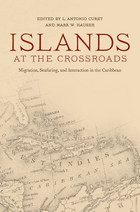
Islands at the Crossroads
Migration, Seafaring, and Interaction in the Caribbean
L. Antonio Curet
University of Alabama Press, 2011
A long sequence of social, cultural, and political processes characterizes an ever-dynamic Caribbean history. The Caribbean Basin is home to numerous linguistic and cultural traditions and fluid interactions that often map imperfectly onto former colonial and national traditions. Although much of this contact occurred within the confines of local cultural communities, regions, or islands, they nevertheless also include exchanges between islands, and in some cases, with the surrounding continents. recent research in the pragmatics of seafaring and trade suggests that in many cases long-distance intercultural interactions are crucial elements in shaping the social and cultural dynamics of the local populations.
The contributors to Islands at the Crossroads include scholars from the Caribbean, the United States, and Europe who look beyond cultural boundaries and colonial frontiers to explore the complex and layered ways in which both distant and more intimate sociocultural, political, and economic interactions have shaped Caribbean societies from seven thousand years ago to recent times.
Contributors
Douglas V. Armstrong / Mary Jane Berman / Arie Boomert / Alistair J. Bright / Richard T. Callaghan / L. Antonio Curet / Mark W. Hauser / Corinne L. Hofman / Menno L. P. Hoogland / Kenneth G. Kelly / Sebastiaan Knippenberg / Ingrid Newquist / Isabel C. Rivera-Collazo / Reniel Rodríquez Ramos / Alice V. M. Samson / Peter E. Siegel / Christian Williamson
[more]
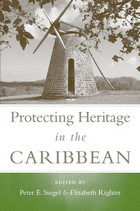
Protecting Heritage in the Caribbean
Peter E. Siegel
University of Alabama Press, 2011
Heritage preservation is a broad term that can include the protection of a wide range of human-mediated material and cultural processes ranging from specific artifacts, ancient rock art, and features of the built environment and modified landscapes. As a region of multiple independent nations and colonial territories, the Caribbean shares a common heritage at some levels, yet at the same time there are vast historical and cultural differences. Likewise, approaches to Caribbean heritage preservation are similarly diverse in range and scope.
This volume addresses the problem of how Caribbean nations deal with the challenges of protecting their cultural heritages or patrimonies within the context of pressing economic development concerns. Is there formal legislation that requires cultural patrimony to be considered prior to the approval of development projects? Does legislation apply only to government-funded projects or to private ones as well? Are there levels of legislation: local, regional, national? Are heritage preservation laws enforced? For whom is the heritage protected and what public outreach is implemented to disseminate the information acquired and retained?
In this volume, practitioners of heritage management on the frontline of their own islands address the current state of affairs across the Caribbean to present a comprehensive overview of Caribbean heritage preservation challenges. Considerable variability is seen in how determined and serious different nations are in approaching the responsibilities of heritage preservation. Packaging these diverse scenarios into a single volume is a critical step in raising awareness of the importance of protecting and judiciously managing an ever-diminishing fund of Caribbean heritage for all.
Contributors
Todd M. Ahlman / Benoît Bérard / Milton Eric Branford / Richard T. Callaghan / Kevin Farmer / R. Grant Gilmore III / Jay B. Haviser / Ainsley C. Henriques / William F. Keegan / Bruce J. Larson / Paul E. Lewis / Vel Lewis / Reg Murphy / Michael P. Pateman / Winston F. Phulgence / Esteban Prieto Vicioso / Basil A. Reid / Andrea Richards / Elizabeth Righter / Kelley Scudder-Temple / Peter E. Siegel / Christian Stouvenot / Daniel Torres Etayo
[more]
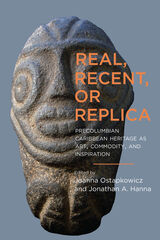
Real, Recent, or Replica
Precolumbian Caribbean Heritage as Art, Commodity, and Inspiration
Edited by Joanna Ostapkowicz and Jonathan A. Hanna
University of Alabama Press, 2021
A Choice Outstanding Academic Title, 2022
Examines the largely unexplored topics in Caribbean archaeology of looting of heritage sites, fraudulent artifacts, and illicit trade of archaeological materials
Real, Recent, or Replica: Precolumbian Caribbean Heritage as Art, Commodity, and Inspiration is the first book-length study of its kind to highlight the increasing commodification of Caribbean Precolumbian heritage. Amerindian art, including “Taíno” art, has become highly coveted by collectors, spurring a prolific and increasingly sophisticated black market of forgeries, but also contemporary artistic engagement, openly appreciated as modern artworks taking inspiration from the past. The contributors to this volume contend with difficult subject matter including the continued looting of archaeological sites in the region, the seismic increase of forgeries, and the imbalance of power and economic relations between the producers and consumers of neo-Amerindian art.
The case studies document the considerable time depth of forgeries in the region (since the late nineteenth century), address the policies put in place by Caribbean governments and institutions to safeguard national patrimony, and explore the impact looted and forged artifacts have on how museums and institutions collect and ultimately represent the Caribbean past to their audiences. Overall, the volume emphasizes the continued desire for the “authentic” Precolumbian artifact, no matter the cost. It provides insights for archaeologists, museum professionals, art historians, and collectors to combat illegal trade and support communities in creating sustainable heritage industries.
Examines the largely unexplored topics in Caribbean archaeology of looting of heritage sites, fraudulent artifacts, and illicit trade of archaeological materials
Real, Recent, or Replica: Precolumbian Caribbean Heritage as Art, Commodity, and Inspiration is the first book-length study of its kind to highlight the increasing commodification of Caribbean Precolumbian heritage. Amerindian art, including “Taíno” art, has become highly coveted by collectors, spurring a prolific and increasingly sophisticated black market of forgeries, but also contemporary artistic engagement, openly appreciated as modern artworks taking inspiration from the past. The contributors to this volume contend with difficult subject matter including the continued looting of archaeological sites in the region, the seismic increase of forgeries, and the imbalance of power and economic relations between the producers and consumers of neo-Amerindian art.
The case studies document the considerable time depth of forgeries in the region (since the late nineteenth century), address the policies put in place by Caribbean governments and institutions to safeguard national patrimony, and explore the impact looted and forged artifacts have on how museums and institutions collect and ultimately represent the Caribbean past to their audiences. Overall, the volume emphasizes the continued desire for the “authentic” Precolumbian artifact, no matter the cost. It provides insights for archaeologists, museum professionals, art historians, and collectors to combat illegal trade and support communities in creating sustainable heritage industries.
[more]
READERS
Browse our collection.
PUBLISHERS
See BiblioVault's publisher services.
STUDENT SERVICES
Files for college accessibility offices.
UChicago Accessibility Resources
home | accessibility | search | about | contact us
BiblioVault ® 2001 - 2025
The University of Chicago Press



